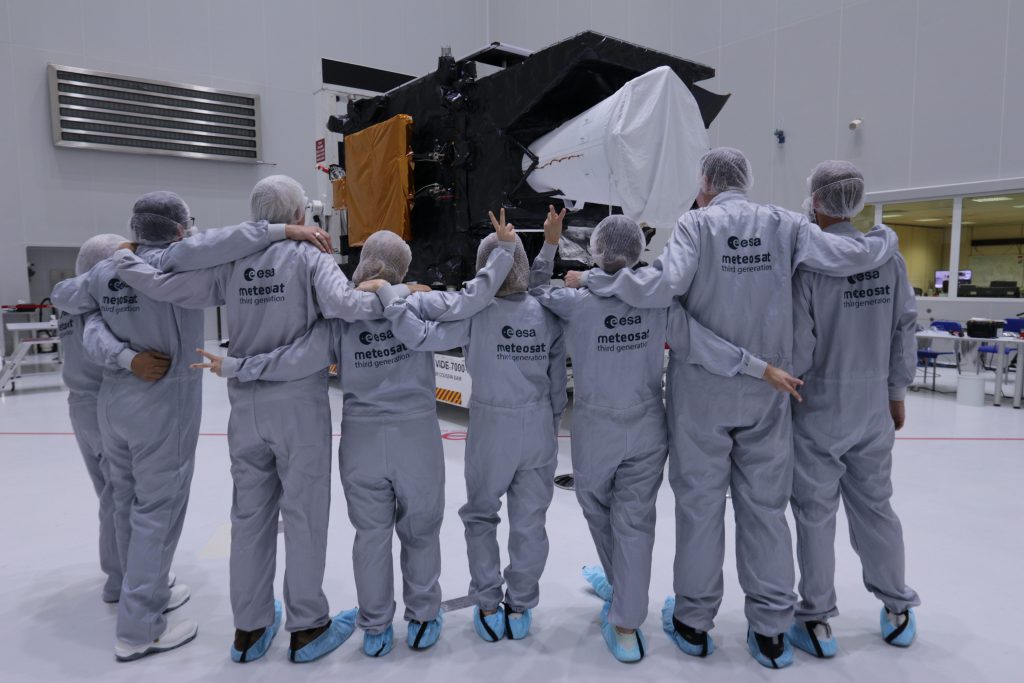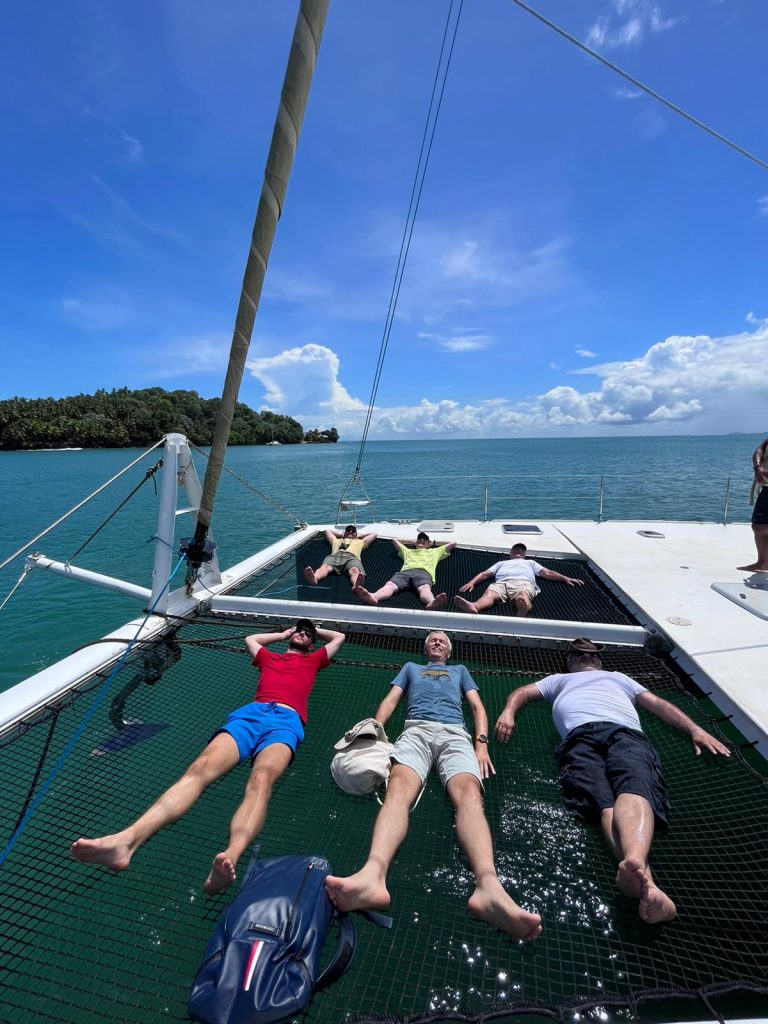Every week, people leave Kourou and newcomers arrive. I arrived with James, just after Karolina, Donny and Pierre left. Later in the week, also Alex, Stephane, Manfred and Paul returned to Europe.
During the last week, the final avionics tests were performed on the platform, Flexible Combined Imager and the Lightning Imager. Some fault detection, isolation and recovery (FDIR) re-tests were performed, confirming that configuration for both instruments is good.
All the tests are going smoothly, and the satellite is behaving well. The attitude and orbit control system (AOCS) post-test review went flawlessly. No anomalies were discovered, and all results were as expected. A great result from the industry and ESA AOCS teams.
A first launch configuration dry run was executed, giving us the timeline of how long it takes to configure the satellite to be ready for launch. This was confirmed to be around six hours. Some further process optimisations were identified, which will be checked in a repeat dry run.

Happy with the testing. (ESA)
The countdown procedure validation process is well under way thanks to the excellent cooperation between all parties, ESA, EUMETSAT and the industrial team of Thales Alenia Space and OHB. It will be exercised using the satellite in the loop in the coming days.
On Tuesday, we had some important guests: the CNES Weather Team. They are responsible for assessing the meteorological conditions on the day of the launch and will give the green light regarding the weather to launch. Obviously, we gave them VIP treatment, hoping for their positive judgement on the launch day.
Thanks to the progress made, the MTG-I1 team could enjoy some free time at the weekend. A visit to Îles du Salut was organized by Giulia. Here, I have to contradict a statement from an earlier blog saying that coconuts don’t move. On the Île Saint-Joseph, I experienced that they do: they move very quickly downwards. When you are close, it is even possible to hear them whistle through the air before they land with a loud bang.
The high temperatures inspired us to go swimming and have a diving contest, which was won by the Argentinian competitor. Afterwards, the skipper could sail home with an impressive ‘catch of the day’, as you can see in the picture.

Heading back to the office. (ESA)
For the colleagues that went home last week and are still traumatised by the ash butterflies, there is some good and bad news. The good news is that the heavy rains made the ash butterflies disappear. The bad news is that it is raining more and more, and according to the locals, the rainy season has started.
I had the opportunity to take a last look at the satellite that I have worked on for 14 years. It looks in great shape and I cannot wait to see the first signals arrive back on Earth from the place where it belongs: 35786 km above the equator.
At the same time, in the Launch and Early Orbit Phase (LEOP) Ground Station in Fucino, Italy, a big team of ESA, Thales Alenia Space and OHB engineers, called the LEOP team, is preparing by running another week of LEOP simulations. The LEOP team will operate the satellite from the moment of the launch until hand-over to the commissioning team in EUMETSAT, which is planned 12 days later.
On Monday, Natalia and Georgia arrived, adding more females to the team. The hand-over training was given by Giulia and I’m happy to report that the team is in good hands.
As predicted, after our benevolent leader Paul left, Sergeant Major James restored the necessary military discipline in the team. Time to go home.
Post from: Pieter Van Den Braembussche, ESA MTG Satellites System and Operations Manager
Read more about the Meteosat Third Generation mission.

Discussion: no comments